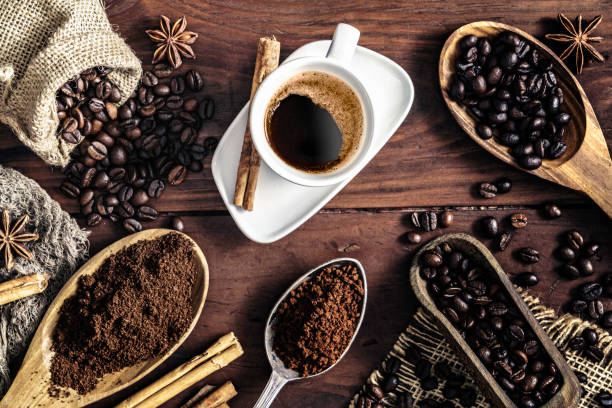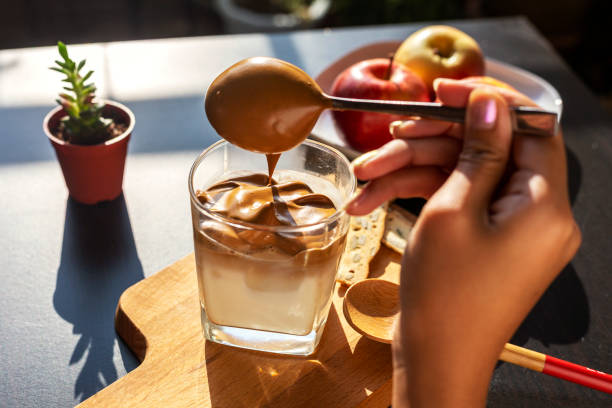In the quest for the perfect cup of coffee, the ratio of coffee to water is the cornerstone of flavor, aroma, and strength. As we dive into the world of caffeinated bliss, understanding the science and art behind “How Many Scoops Of Coffee Per Cup” becomes not just a question, but a journey into the heart of coffee brewing itself. This article is crafted for both novices and connoisseurs alike, aiming to demystify the complexities of coffee preparation. With a blend of expertise gleaned from baristas, coffee enthusiasts, and scientific research, we offer insights that promise to elevate your coffee experience. Whether you’re seeking to refine your morning ritual, impress guests, or simply indulge in the pleasure of a well-brewed cup, you’ll find value in these pages. We invite you to explore the nuances of coffee measurements, the impact of bean type, grind size, and brewing method on your final brew, and much more. Prepare to embark on a flavorful journey that will not only satisfy your curiosity but also enhance your appreciation for every sip. Let’s discover together the perfect balance that makes a cup of coffee not just good, but extraordinary.
Basic Measurements

Let’s start with some standard coffee-to-water ratios using different units of measurement.
Grams
For traditional drip coffee, many experts recommend using 15 grams of medium ground coffee per 250ml (about 8 ounces) of water. This produces a robust, flavorful cup. However, the ratio can be adjusted based on preferences:
- More coffee (17-20g per 8oz) for a stronger, bolder brew.
- Less coffee (10-13g per 8oz) for a milder cup.
The grind size also impacts flavor. Generally, use:
- Finer grind for stronger coffee since it has more surface area exposed to water.
- Coarser grind for milder coffee because water flows through more quickly.
So consider grind size when adjusting amounts in grams. Espresso methods require much finer grinds and higher coffee-to-water ratios compared to drip.
Tablespoons and Scoops
For measurements by volume rather than weight, here is a general guide for standard cup sizes:
| Cup Size | Tablespoons Coffee |
Level Scoops Coffee
|
| 8 oz | 2 | 3 |
| 10 oz | 2.5 | 4 |
| 12 oz | 3 | 4.5 |
However, one tablespoon or scoop of coffee can vary in weight based on factors like:
- Grind size – Finer coffee weighs more per tablespoon.
- Coffee type – Dark roasts are less dense than light roasts.
- Compacting – Lightly packed or sifted coffee weighs less.
So you may need to adjust the measurements above depending on your specific coffee. Make sure to use level, not heaping, scoops for best results.
Note: In general, 2 level tablespoons or 3 level scoops makes 1 ounce of ground coffee.
You can also measure coffee in teaspoons using the conversions:
- 1 tablespoon = 3 teaspoons
- 1 scoop = 2 teaspoons
But tablespoons or scoops designed for coffee yield more consistent results.
Coffee Pot Considerations
When brewing a full pot, don’t rely solely on the cup markings on the coffeemaker to determine how much ground coffee to add. Here’s why:
Most standard coffee cups hold 8 ounces of coffee, while many coffee pot markings assume a 5 ounce cup size. So the number of “cups” indicated on a pot is often misleading.
For example, a “10 cup” coffee pot likely yields closer to 15 standard 8oz cups. To avoid weak, watery coffee, consult the table below for proper coffee-to-water ratios based on actual brewed yields.
Standard Coffee Pot Sizes
| Pot Size | Cups* | Tablespoons Coffee | Scoops Coffee |
| 30oz (20 cup) | 3-4 | 6 | 9 |
| 40oz (30 cup) | 5 | 8 | 12 |
| 60oz (40 cup) | 7-8 | 12 | 18 |
*Based on 8oz cup size. Cups listed in parentheses are misleading.
Consider the grind size and brewing method as well when measuring coffee for pots. Drip coffee requires slightly less ground coffee than a percolator, for example. And as mentioned, finer grinds call for a bit more coffee per cup.
Additional Factors
A few other variables impact the ideal coffee-to-water ratio and flavor:
- Water quality – Filtered water is best to avoid minerals affecting taste.
- Coffee freshness – Older coffee loses its robust flavor. Use grounds within 2 weeks of roasting.
- Personal taste – Adjust amounts to suit your preferred strength and flavor profile.
Adjusting to Taste
With so many factors involved, finding your perfect cup requires some trial and error. Here are some tips for tweaking your brew based on taste:
- If it’s too strong or bitter, try slightly less ground coffee and/or a coarser grind.
- If it’s too weak or watery, use a bit more coffee and/or opt for a finer grind.
- The desired strength often depends on the coffee type as well. Light roasts tend to have more delicate flavor best complemented by higher coffee-to-water ratios.
- When in doubt, start in the middle of the range and adjust from there. You can always add more coffee or water to balance taste.
Troubleshooting Common Issues
Here are some quick solutions to a few common coffee brewing troubles:
- Coffee overflowing filter basket – The grounds are too finely ground. Opt for a more coarse grind or slightly less coffee.
- Weak, watery brew – Increase amount of coffee, reduce water, and/or grind coffee finer.
- Bitter, acidic, or harsh taste – Use less coffee, more coarse grind, and/or higher quality beans.
- Flat, bland taste – Allow coffee to brew longer, increase amount of grounds, or use fresher beans.
- Sediment in brewed coffee – Grind size is too fine or paper filter needs replacing.
The type of brewing equipment factors into troubleshooting as well. Consult device manuals for tips. Upgrades like burr grinders and water filters can also help perfect the brew.
Exploring Advanced Brewing Methods

While this guide focuses on standard automatic drip preparation, there’s a whole world of specialized brewing methods out there. Two additional techniques worth exploring:
- French press – Steeps coffee grounds directly in hot water, then presses down a filter to separate grounds. This full immersion method produces a bold, flavorful brew. Use a 1:12 coffee-to-water ratio by weight.
- Pour over – Water is manually poured over coffee grounds in a filter cone Brewer. Flow rate control and even extraction make for bright, nuanced flavor. Aim for 1:16 ratio.
Conclusion
Achieving coffee perfection is a mix of science and art. While coffee-to-water ratios provide a solid starting point, individual taste preferences, brewing style, and coffee type all impact the ideal measurements. Prepare for a rewarding adventure fine-tuning flavor and discovering new brew methods. Just be sure to measure with scoops leveled, not heaped, for best results. Here’s to great cups of coffee.
